Movie Review – An American In Paris
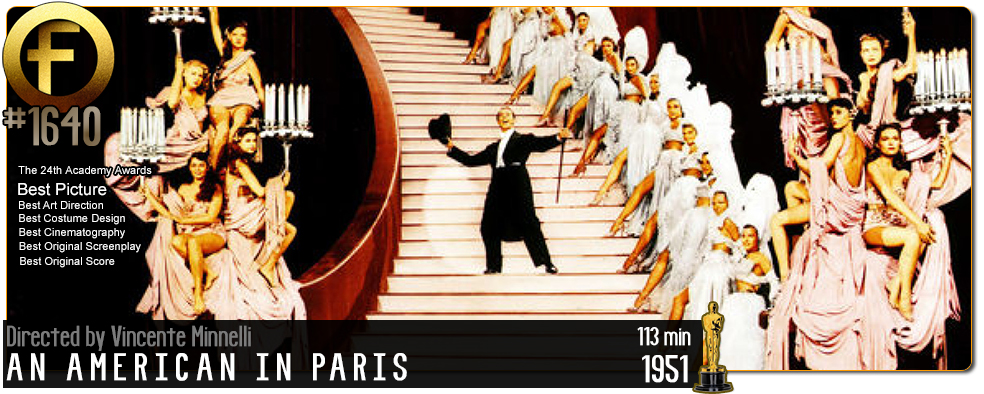
Principal Cast : Gene Kelly, Leslie Caron, Oscar Levant, Georges Guetary, Nina Fochs, Eugene Borden, Madge Blake, Noel Neill, John Eldredge, Anna Q Nilsson.
Synopsis: Three friends struggle to find work in Paris. Things become more complicated when two of them fall in love with the same woman.
********
The streets and bars of the City of Love become the plaything of a struggling artist and hopeless romantic in An American In Paris, a Gene Kelly-starring vehicle which would go on to win the Best Picture Oscar for 1951, at a time when Hollywood musicals were at their most popular. The foot-tapping, baritone-soaring, orchestral smorgasbord exuberance of George Gershwin’s tunes (which inspired this film), Gene Kelly’s athletic dance style and his repartee with both leading ladies at his disposal here – Leslie Caron and Nina Fochs – as well as a sumptuous climactic sequence that looks as opulent as it sounds, all combine to give An American In Paris a high-octane comedic-slash-dramatic energy that is matchless in virtuosity and a wonder of cinematic extravagance. If only it wasn’t all just… too much.
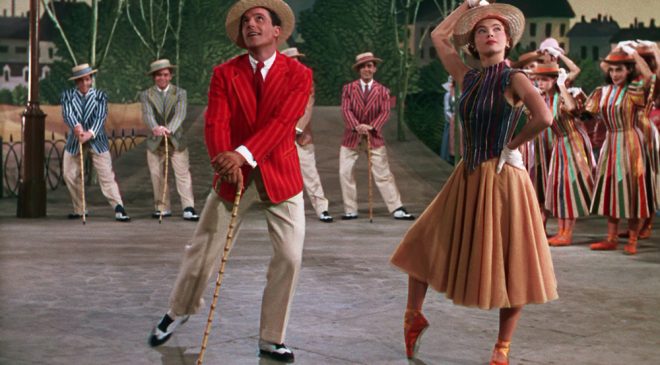
American war veteran Jerry Mulligan (Gene Kelly) is living in Paris where he’s attempting to make a career as a painter. After a chance encounter with wealthy heiress Milo Roberts (Nina Fochs), who purchases most of his art and becomes his sponsor (and wannabe lover), Jerry seems to have it made, until he meets the beautiful young Lise Bouvier (Leslie Caron) and falls desperately in love himself. The trouble is, unbeknownst to Jerry, Lise is the girlfriend of Jerry’s French singing friend Henri Baurel (Georges Guetary), a fact neither share until the script calls for a dramatic lurch to propel its otherwise fluffy narrative. The three-way love affair threatens to overwhelm them all. Along for the ride is Jerry’s struggling concert pianist friend Adam Cook (Oscar Levant).
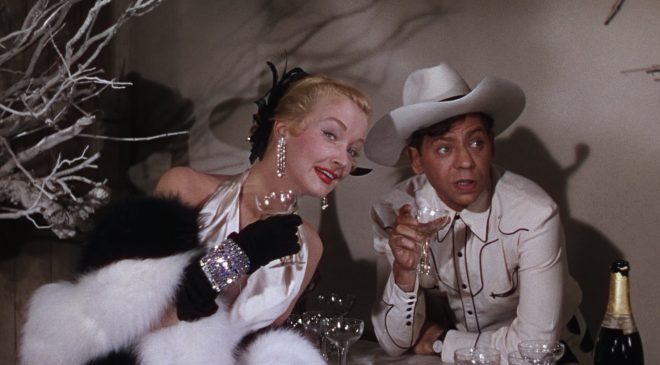
An American in Paris wants not for production values or rich, deep set design and commanding dance sequences. It’s top-tier Hollywood Musical Magic, this film, led by the always amenable Gene Kelly and supported by a roster of equally affable co-stars, and you’ll go a long way to see a film filled to the brim with quality tunes, stunning photography and a butt-load of incredibly epic dance sequences, one of which climaxes the film in a way that I doubt has ever been equalled. In saying that, however, there’s a lot of stuff in An American In Paris that lapsed my concentration somewhat, and the addition of Leslie Caron (who came in to replace a then-pregnant Cyd Charisse at the last minute) as Kelly’s love-interest is perhaps the film’s weakest element.
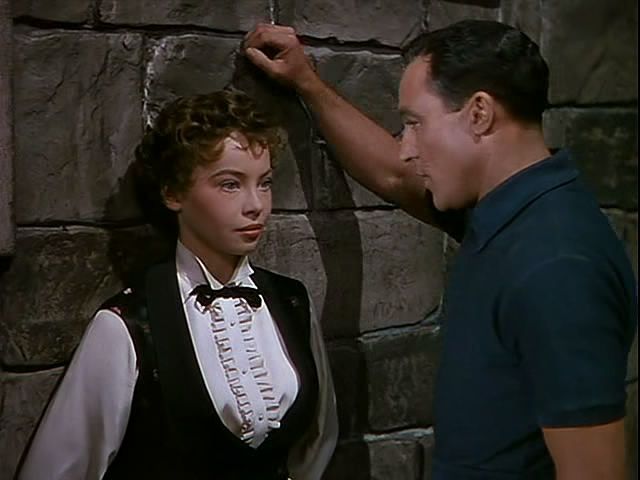
In terms of story, it’s a classic three-way romantic triangle: two men fall for the same girl, while another girl falls for one of the men who remains convincingly disinterested in her. Ahh, Hollywood, you know how to play to the tropes, dontcha. As leading man, Kelly runs rings around his co-stars, a level of screen charisma and chemistry above everyone else in the movie, and as usual he makes his too-clever-by-half tapdance routines look like he’s floating on air; able support by Levant and Guetary in several moments of song and dance are well done, while Fochs does her best as the film’s unrequited love, Nina. It’s Caron who underwhelms: I found her wooden and ill-suited to the part, unable to come across as somebody Gene Kelly would fall desperately for, or who convincingly responds to his advances. Given Caron would go on to garner some Oscar acting nominations in future films I feel a tad hypocritical suggesting her talents here diminish the film, but… well, I think her talents here against far more assured actors are found wanting. Her dancing? Well, that’s another story.
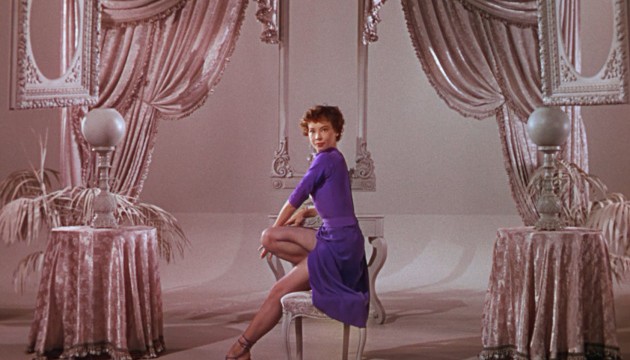
Part of the allure of An American In Paris is the inclusion of its musical numbers, and as you’d expect from any film of this vintage they range from pretty mediocre to absolutely astonishing. Gene Kelly’s rendition of “I’ve Got Rythym” to a bunch of French kids is great, his trio with Levant and Guetary about Strauss is a standout, and Levant’s fantasy orchestral performance of Gershwin’s Concerto In F is fanciful indeed. But the film’s standout musical moment comes in a climactic near-20 minute ballet sequence involving Kelly, Caron and a horde of extras, filmed on soundstages made to look like shadows of Parisian architecture, is as extravagant as Hollywood would ever produce. Caron’s form and Kelly’s technique match perfectly, so I guess one can see why she was chosen for the role in this respect, I just wish her acting was of a note similar to her male brethren.
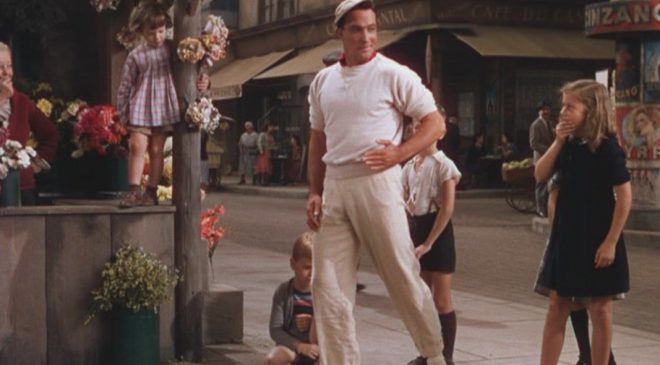
Alongside the dance and music, An American In Paris contains a number of notable camera tricks and effects. Directed by Vincente Minnelli (father of acclaimed actress Liza Minnelli), the film’s technical intricacy is something to behold if you’re watching closely. At times, Minnelli approaches a Zemeckis-like cleverness of camerawork, using large sets and nice match-cuts and seamless rear projection to accomplish shots and edits that would make even Hitchcock scratch his head. A nice little mirror reflection moment will have you puzzling over just how such shots were achieved before CG effects came along. Minnelli wasn’t afforded a widescreen scope to capture his film’s sense of scale, but he does justice to the 1.33 ratio and fills it with a riot of colour, movement and intricate visual panache.
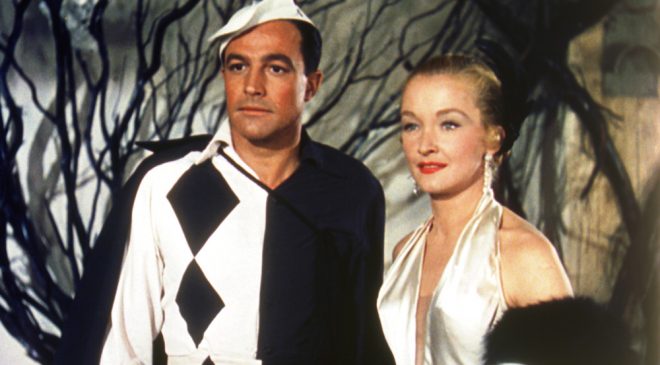
An American In Paris isn’t subtle, it isn’t realistic and it sure isn’t the Paris I saw last time I was there: it’s a tourist’s fantasy-Paris, an old-school bohemian mecca that magnifies the ubiquitous romance while enhancing the charm and elegance of one of the world’s most beautiful cities. Occasionally it dips into overdoing things, and this saccharine sentimentalism does tend to work against the movie a little, but overall it’s a pleasant enough example of the Hollywood Musical done right. Did it deserve a Best Picture win? Not really, mainly because it’s hard to see what separates this film from others of the same genre and disposition (and it certainly ain’t as memorable as either A Place In The Sun or Streetcar Named Desire, both of which were also-rans in 1951), but with Kelly on the screen the film floats along with ease and charms the pants of any willing viewer.


I’ve always been a big fan of this picture except with the final musical number which I felt was too big. Otherwise I do love it, probably more than many.
Ha ha, we’re in opposite camps on this then: I found the climactic dance sequence quite enthralling. if only they’d done a bit more of that through the film I might have graded it higher!